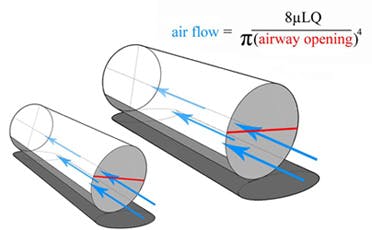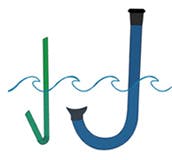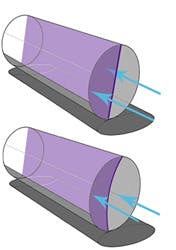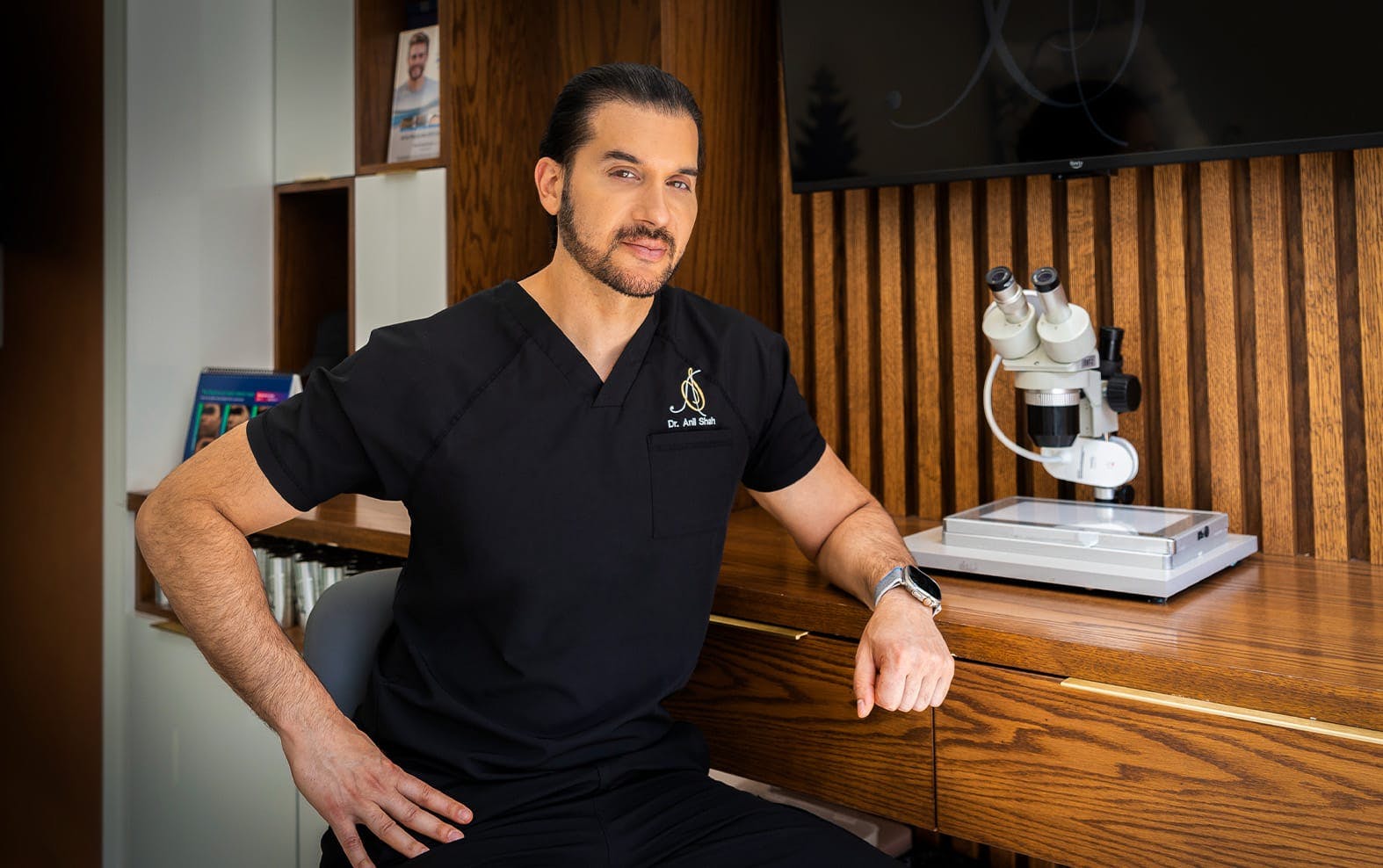
Nasal Physiology and Physics
For many patients who can’t breathe from their nose, the last thing they want to think about is physics. However, it is the precise understanding of several principles in physics which allows a nose to function and breathe as ideally as possible. Ideally, the airflow through a nose is laminar (straight flowing air) through a large diameter airway.
Nasal Diameter- Why it Matters So Much
 It seems peculiar why a small change in the airway has so a big impact on how breather. If we compare the nose to a tube, there is an applicable principle termed the Poiseuille Equation.
It seems peculiar why a small change in the airway has so a big impact on how breather. If we compare the nose to a tube, there is an applicable principle termed the Poiseuille Equation.
From this equation we can see that if the airway is slightly larger, it will have a much larger impact on the nasal airflow. An example if the radius of the nose went from 1 cm to 2 cm, the airway would open up not just twice but 16 times. An analogy of how a small change in airway diameter can impact breathing is to compare breathing from a straw to a snorkel. A straw has a smaller airway and it is possible to breathe under water with it. However, with faster swimming and every so often a swimmer will need to raise their head above water to breathe. A snorkel allows the swimmer easier and more fluid breathing. Small airways collapse more likely
 Another reason why a relatively smaller airway is more likely to collapse is due to another physics principle called Bernoulli’s principle. This principle states that when you breathe through a pipe with various sizes, the flow is fastest through the narrowest portion. Why is faster airflow an issue? First of all, think of a shower curtain. With faster airflow inside the shower, relative to outside the shower, the curtain collapses in the inside of the shower due to this principle. In a nasal airflow analogy, when the nose is narrowed in specific areas, such as near the septum or a narrow nasal valve, the faster airflow can create a similar effect collapsing the nasal airway.
Another reason why a relatively smaller airway is more likely to collapse is due to another physics principle called Bernoulli’s principle. This principle states that when you breathe through a pipe with various sizes, the flow is fastest through the narrowest portion. Why is faster airflow an issue? First of all, think of a shower curtain. With faster airflow inside the shower, relative to outside the shower, the curtain collapses in the inside of the shower due to this principle. In a nasal airflow analogy, when the nose is narrowed in specific areas, such as near the septum or a narrow nasal valve, the faster airflow can create a similar effect collapsing the nasal airway.
 Surgeon’s who understand the physics of the nose can better understand how to treat it. In some cases, this may mean opening a nasal airway from an obstructed portion of septal cartilage. In other cases, this may mean either widenening or supporting a nasal airway to support it.
Surgeon’s who understand the physics of the nose can better understand how to treat it. In some cases, this may mean opening a nasal airway from an obstructed portion of septal cartilage. In other cases, this may mean either widenening or supporting a nasal airway to support it.


